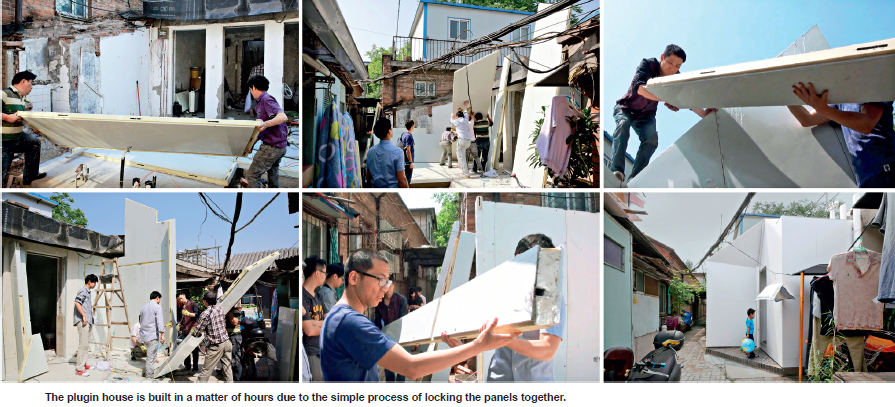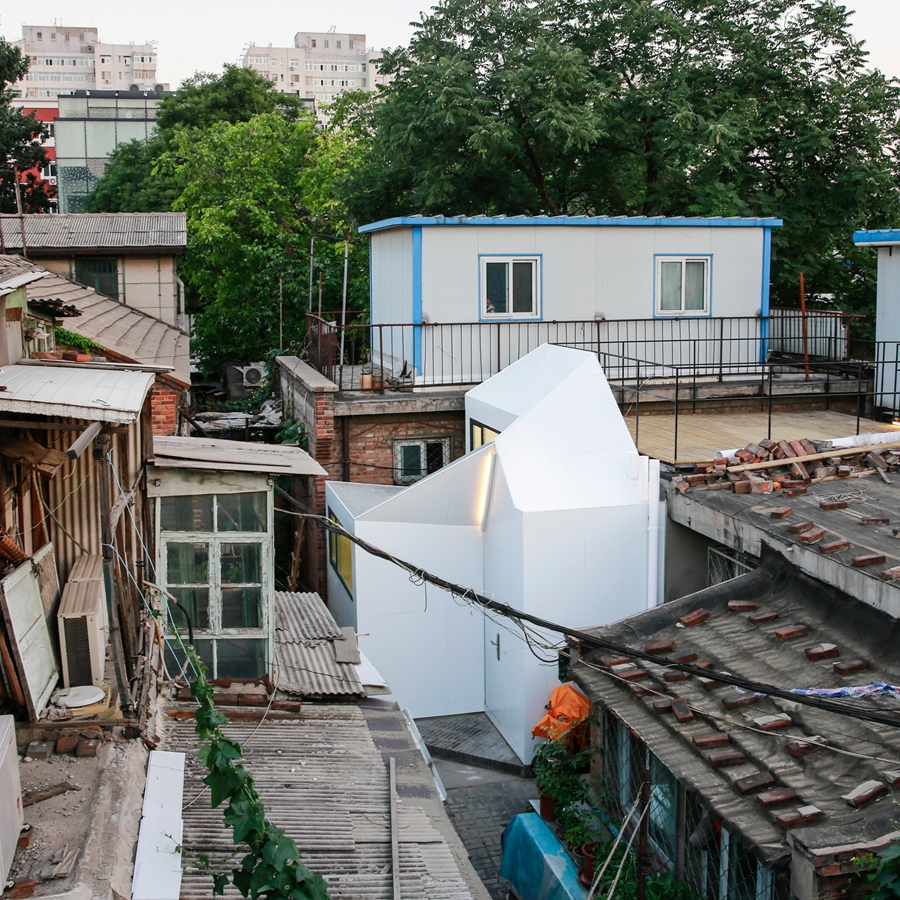Preserving and Honoring Beijing’s Hutongs
China Today by Degen Hill,April 20, 2018 Adjust font size:
One of the biggest challenges of living in a hutong is the lack of natural light as many of the buildings are situated close together. To update and modernize the house, the architects used prefabricated panels to create a contemporary, well-lit residence. Another challenge, especially in the Changchunjie neighborhood, is that it has no sewerage system, so public toilets are usually the only option. But an off-the-grid composting toilet system integrated into the plugin makes hutong life much more convenient. James Shen, principal at PAO, stated, “Most of our residential plugins come with composting toilets and some use septic tanks. These have been used for years and have demonstrated their viability as a solution for raising standards for sanitation as well as a much more environmentally friendly option.”
Due to the proximity of the house being so close to the other buildings, the architects had to negotiate its size and shape with Mrs. Fan’s neighbors, so they cut and arranged the panels as they constructed the building. The final design comprises two volumes with stepped heights and a series of slanted roofs so as not to block the neighbors’ sunlight, air circulation, and views of the people next door. “Mrs. Fan’s plugin couldn’t have happened without working closely with her neighbors, anyone who’s worked in the hutongs would understand. The form of the house is in fact shaped by and in consideration for her neighbors,” said Shen.


